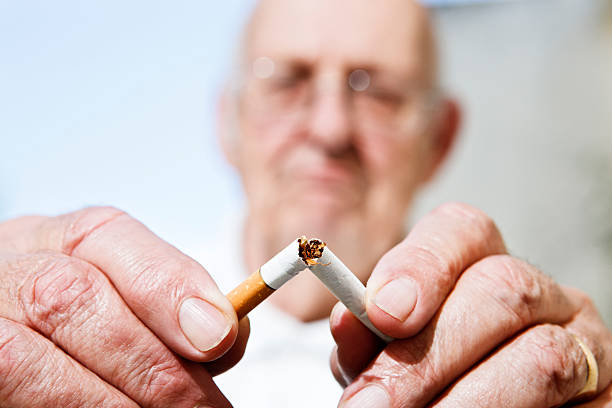Laser Treatment for Smoking Cessation: A Comprehensive Guide
Tobacco use primarily contributes to preventable fatalities globally, and ceasing smoking can be difficult. While several smoking cessation methods are available, laser therapy is an innovative and non-invasive solution that recently gained popularity. In this comprehensive guide, we’ll explore everything you need to know about laser treatment for smoking cessation, including how it works, its benefits, and its risks.
What is Laser Treatment to Quit Smoking?
Applying low-level lasers to specific body areas, or acupoints is the non-invasive process involved in laser treatment for smoking cessation. These acupoints are thought to be connected to various body parts, including the lungs and the brain. Stimulating them is believed to reduce cravings and withdrawal symptoms associated with smoking.
A laser device is applied to specific acupoints on the hands, face, ears, and wrists during a laser session. The laser stimulates the acupoints, releasing endorphins and reducing cravings for nicotine. The process is free of discomfort and devoid of any medicinal or surgical involvement.
Benefits of Laser Therapy for Smoking Cessation
Laser therapy for smoking cessation offers several benefits over traditional smoking cessation methods, including:
- Non-Invasive Procedure: Laser therapy is a non-invasive procedure that does not require any medication or surgery. It’s a safe and comfortable option for individuals who may be sensitive to pain or have medical conditions preventing them from using medication.
- Painless: Laser therapy is a painless procedure that does not require any incisions or sutures. It’s a suitable option for individuals who want to avoid the discomfort associated with surgery or medication.
- Reduced Cravings: Laser therapy is designed to reduce cravings for nicotine, making it easier for individuals to quit smoking. The process triggers the release of endorphins that alleviate the anxiety and stress linked to quitting smoking.
- No Side Effects: Laser therapy has no known side effects, making it a safe and effective option for individuals who want to quit smoking without experiencing the adverse effects associated with medication.
Risks of Laser Treatment for Smoking Cessation
While laser treatment for quitting smoking is generally safe, some risks are associated with the procedure. These include:
- Effectiveness: Laser treatment may only be effective for some, and some individuals may require multiple sessions to achieve the desired results.
- Cost: Laser treatment for smoking cessation can be expensive, and some insurance plans may not cover the cost of the procedure.
- Lack of Regulation: Laser treatment for smoking cessation is not regulated by the Food and Drug Administration (FDA), and some providers may not be adequately trained or qualified to perform the procedure.
- Infection: There is a small risk of infection associated with laser treatment, especially if the equipment used is not properly sterilized.
Is Laser Treatment for Smoking Cessation Right for You?
Laser treatment may be a suitable option for individuals who want to quit smoking but have been unsuccessful with other methods. It’s a non-invasive and painless procedure that does not require any medication or surgery. However, it’s essential to consult with a qualified provider to determine if laser treatment is right for you.
Individuals who are pregnant, have a pacemaker or have a history of seizures should avoid laser treatment for smoking cessation. In addition, it’s essential to disclose any medical conditions or medications you are taking to your provider before the procedure.
In Conclusion
Smoking tobacco is a habit that increases the risk of several health complications, including lung cancer, heart attack, and other cardiovascular diseases. While nicotine replacement therapy and cessation programs can aid individuals in stopping smoking, they may have side effects or low success rates.
However, alternative methods, such as low-level laser therapy, can effectively stimulate specific acupuncture points and the body’s natural endorphin levels, reducing the stress and anxiety that comes with smoking cessation. In addition, these treatments can offer smoke-free health benefits without needing medication or surgery, making them a safe and non-invasive option.
It’s essential to incorporate physical activity and lifestyle changes to increase the effectiveness of laser therapy in smoking cessation.
Q & A
- How does laser treatment for smoking cessation program work? Laser treatment for smoking cessation involves using low-level lasers to stimulate specific acupuncture points in the body. The stimulation is believed to release endorphins, which reduce nicotine cravings and withdrawal symptoms.
- Is laser treatment for smoking cessation safe? Laser treatment for smoking cessation is generally safe, but it may not be suitable for everyone. It’s essential to consult with a qualified provider to determine if laser treatment is right for you.
- What advantages does laser treatment offer for those looking to quit smoking? Laser treatment for smoking cessation is a non-invasive and painless procedure that does not require medication or surgery. The treatment is effective in reducing nicotine cravings, and it has no known side effects.
- How long does laser treatment for smoking cessation take? The duration of laser treatment for smoking cessation varies depending on the individual’s needs and smoking history. Typically, the treatment requires multiple sessions, each lasting about 30 minutes.
- What is the success rate of laser treatment for smoking cessation? The success rate of laser treatment for smoking cessation varies, and it may not be effective for everyone. However, studies have shown that laser treatment can significantly reduce nicotine cravings and increase the chances of quitting smoking.


